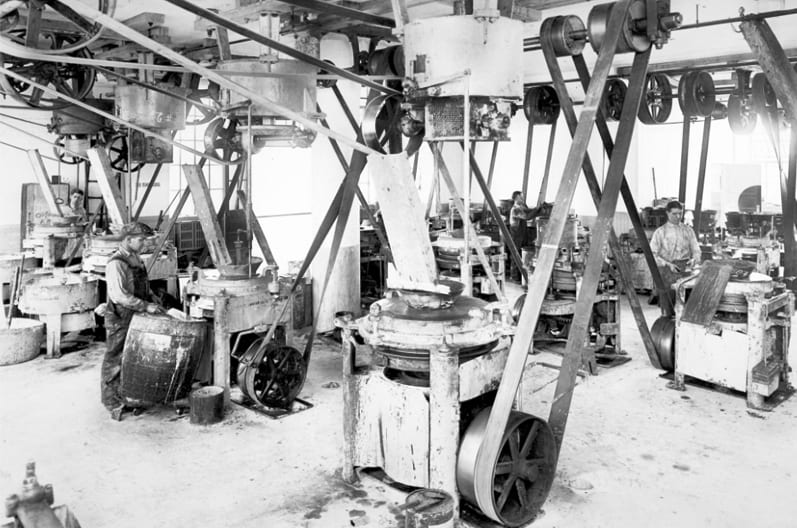
30,000 Years Ago
Paint – the group of emulsions generally consisting of pigments suspended in a liquid medium for use as decorative or protective coatings – made its earliest appearance about 30,000 years ago. Cave dwellers used crude paints to leave behind the graphic representations of their lives that even today decorate the walls of their ancient rock dwellings.
1700 – 1867
The paint and coatings industry, however, had to wait for the Industrial Revolution before it became a recognized element of the American national economy. The first recorded paint mill in America was reportedly established in Boston in 1700 by Thomas Child. A century and a half later, in 1867, D.R. Averill of Ohio patented the first prepared or “ready mixed” paints in the United States.


Mid-Late 1800s
In the mid-1880’s, paint factories began springing up in population and industrial centers across the nation. Mechanization was making the manufacturing process accessible to a larger and less specialized group of entrepreneurs. The weight of prepared paint made it expensive to transport, so a decentralized structure of small manufacturers in discrete markets dominated the industry until the mid-1900s.
Early 1900s
Besides mechanizing and professionalizing the paint industry, the Industrial Revolution also created vast new markets for paints and coatings. Virtually every product created on an assembly line — from the Model T Ford to the latest-model television — makes extensive use of paints and coatings to beautify, protect and extend the life of the manufactured goods.


Before WWII
As soon as the impact and potential risks of various paint components have been quantified, paint manufacturers act. Historically, the industry readily responded to environmental and health concerns by altering the chemistry of its products to control risks. Paint manufacturers started replacing lead pigments in some paints, for example, before World War II, when safer alternatives became available.
1950s – 1970s
Industry consensus standards limiting the use of lead pigments date back to the 1950s, when manufacturers led a voluntary effort to remove lead from house paints. Common house paints have contained little, if any, lead since then. In 1978, the Consumer Product Safety Commission banned the use of lead in consumer paint.


Today
Many of today’s paints and coatings may go unnoticed by the consumer, but play immeasurably valuable roles in delivering high-quality foodstuffs, durable goods, housing, furniture and thousands of other products to market. Total value of product shipments for the industry were approximately $26.1 billion in 2020.